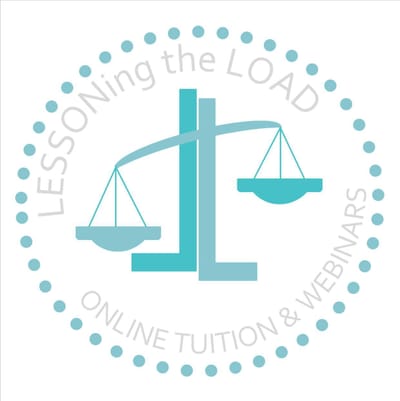The Power of Yet: Why a Growth Mindset Matters More Than You Think
As parents and carers, one of the greatest gifts you can offer a child isn’t just knowledge - it’s the belief that they can grow, adapt and thrive through effort. This powerful belief is called a growth mindset, something students explore in the GCSE Psychology course that I run, and it can be the difference between a learner who gives up at the first hurdle and one who keeps going until they succeed.
But what is a growth mindset, exactly? And how can it be nurtured in the day-to-day life of a child or teen?
Let’s explore why this mindset matters so much - and how to help young people develop it.
Growth Mindset vs. Fixed Mindset: What’s the Difference?
The concept of a growth mindset was developed by psychologist Dr. Carol Dweck through decades of research. In short:
- A fixed mindset is the belief that intelligence, ability, and talent are innate and unchangeable. People with this mindset tend to avoid challenges, fear failure and feel discouraged when things don’t come easily.
- A growth mindset is the belief that abilities can be developed through effort, learning and persistence. People with this mindset embrace challenges, see mistakes as opportunities and understand that success comes through consistent effort.
For example, a child with a fixed mindset might say,
'I’m just not a maths person.'
Whereas, a child with a growth mindset might say,
'I’m finding maths tricky right now, but I can get better with practice.'
The difference may seem small, but it has a profound impact on motivation, resilience, and long-term achievement.
Why a Growth Mindset Is So Important for Learners
Believe it or not, education (especially home education) can offer flexibility and freedom - but it also requires self-motivation, independence and perseverance. A growth mindset supports all of these by helping learners:
- Stay curious: When children believe they can improve, they’re more likely to explore new topics and stretch their thinking.
- Bounce back from setbacks: Learners who often work at their own pace may encounter new challenges regularly. A growth mindset helps them see difficulties as part of the learning journey - not a sign to give up.
- Develop independence: Growth-minded learners are more likely to take ownership of their studies because they believe their efforts will pay off.
- Manage exam pressure: Whether your child is preparing for I/GCSEs, A-levels or alternative assessments, believing in the power of improvement can help reduce anxiety and build confidence.

Spotting a Fixed Mindset: Common Phrases and Behaviours
Sometimes children (and adults!) develop a fixed mindset without realising it. Here are a few signs that a child may need support shifting their thinking:
- 'I’m rubbish at this.'
- 'I’ll never be good at writing / spelling / science.'
- 'There’s no point trying - it’s too hard.'
- Getting frustrated easily when something doesn’t come naturally
- Avoiding challenges or new learning situations
- Comparing themselves negatively to others
These thoughts are common, especially when a learner is struggling - but they’re not permanent. With the right environment and encouragement, a more helpful mindset can be cultivated.
How to Encourage a Growth Mindset at Home
Building a growth mindset is a long-term process, but small changes in language, routine, and attitude can make a big difference. Here’s how you can help your child develop it day by day:
1. Praise Effort, Not Just Outcome
Instead of focusing on marks, scores or natural talent, celebrate the process. Try phrases like:
- 'I can see how hard you worked on that.'
- 'You kept going even when it got tricky - brilliant persistence.'
- 'You tried a new way of doing that - well done for experimenting.'
This helps children see success as the result of effort, not just ability.
2. Use the Word Yet
This simple word can be transformational. When a child says, 'I can’t do this,' gently add:
'You can’t do it yet.'
This reinforces the idea that ability develops over time.
3. Model a Growth Mindset Yourself
Children learn a lot from watching the adults around them. Let them hear you say things like:
- 'This is challenging for me, but I’m going to keep trying.'
- 'I made a mistake - but I learned something useful.'
- 'I’m still working on this skill.'
This shows them that everyone, no matter their age, is capable of learning and growth.
4. Reframe Mistakes as Opportunities
Rather than trying to prevent mistakes, encourage your child to learn from them:
- Ask: 'What could you try differently next time?'
- Remind them: 'Everyone gets things wrong - it’s how we grow.'
- Share examples of times when you’ve made mistakes and learned from them.
5. Encourage Risk-Taking and Challenge
Offer learning experiences that are just outside your child’s comfort zone - not so hard they’re impossible, but enough to stretch their thinking. Celebrate the attempt, not just the result.
6. Focus on Progress
Keep track of small wins and improvements. A child might not have mastered essay writing yet, but they may be planning more clearly or using more confident vocabulary. Highlight that progress regularly.
7. Create a Supportive Learning Environment
Make it safe to try, fail and try again. Avoid harsh criticism or comparisons with others. Instead, offer constructive feedback and encouragement that reinforces growth.
Final Thoughts: Changing the Narrative
Helping a child shift from a fixed to a growth mindset isn’t about sugar-coating challenges or ignoring difficulties. It’s about changing the story they tell themselves - from 'I'm not good enough' to 'I'm a work in progress, and that’s okay.'
In the long run, learners with a growth mindset are not only more likely to succeed academically - they’re also more resilient, creative and confident in themselves.
So next time your child says, 'I can’t do this,' remind them of the power of 'yet.' With your support and encouragement, they’ll learn that their potential is far greater than they imagined.
